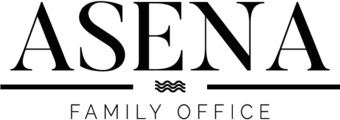International Communique No. 319 – 21st December 2021
————————————————————
CENTRAL BANKS BACK IN THE SPOTLIGHT
The central banks held their final policy meetings for the year. The Fed responded to the unrelenting inflationary pressure by stepping up the rate of tapering so that monthly asset purchases would be wound up by March not June 2022, as was initially scheduled. Members of its policy committee are unanimous that rates need to rise sooner rather than later, and so they expect three rate hikes as early as next year. But they believe that keeping rates low until full employment is achieved again is also vital, so that growth does not suffer further, having already taken multiple hits from coronavirus variants with perhaps more in store.
The Swiss National Bank (SNB), when it met, left its policy unchanged. Rate setters there expect Swiss GDP growth to clock in at 3% and inflation at 1% in 2022. Meanwhile, the European Central Bank (ECB) as expected held rates and will continue snapping up assets until March. In 2022, it sees inflation peaking at 3.2% then levelling off. Christine Lagarde stated that a rate hike next year was highly unlikely, but she also wants to keep her options open. The surprise came from the UK, where the Bank of England (BoE) nudged up its base rate to 0.25% to combat runaway inflation.
Central banks are steadily returning to more orthodox postures while keeping interest rates low relative to equilibrium levels as they seek to prevent their economies from overheating and hoisting inflation too high, or from contracting too sharply and creating deflation. Abrupt rate hikes can be ruled out, especially as inflation may likely subside anyway as pandemic-driven distortions in supply chains are resolved.
The prospect of tightening comes as no surprise as this support was expected to be withdrawn once the economic recovery was on track. To sustain growth, however, consumer spending needs to pick up pace in 2022 to support actual business profits. US households are widely expected to spend the money saved up during lockdowns, thereby reducing the currently high savings ratio to pre-pandemic standards.
Going by macroeconomic indicators, the initial US jobless claims rose to 206,000, while industrial production improved for the second consecutive month. Supply bottlenecks left their mark recently in terms of lower retail sales, although these were 20% above pre-pandemic levels.
Market volatility is being worsened by shifts in investment style resulting from the impending rate hikes and the significant volumes associated with options contracts. This year may have been great overall for equity indices, but a wide disparity exists among the companies that are part of them.
If you have any questions please contact the office on (03) 9670 6070.
